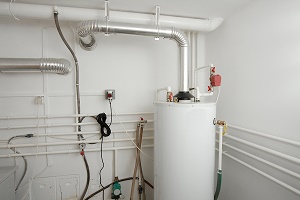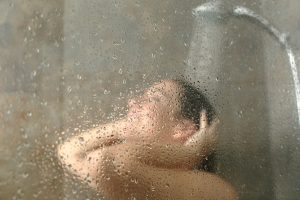Hot Water Plumbing Guide
Date: February 11, 2017
ARTICLES
HOT WATER PLUMBING GUIDE
FEB 10, 2017
Instant hot water. Nothing is better, right? On the flip side, standing in your skivvies for 20 minutes waiting for the hot water fairy to show up is no way to spend your morning. That’s why we’ve put together this hot water plumbing guide. From the standard plumbing options to the new tankless systems, we’ve got the info you want to know about instant hot water and how to keep it that way.
INSTANT HOT WATER
Which water heating system is best for your home? There are many options, but we’ve got the facts that will help you decide.
STANDARD HEATING SYSTEMS
Most homes have standard heating systems which consist of a single water heater, be it electric or gas. The heater is typically at one end of the house, like the garage, and a series of water lines connected the faucets and fixtures to the water heater. When you turn on your shower, for example, hot water that is stored in the water heater pumps through the pipes and into your showerhead. The time it takes to get hot water depends on the faucet’s proximity to the water heater. The further away from the faucet, the longer you have to wait for hot water.
RECIRCULATING SYSTEMS
Many homeowners have started moving away from the standard hot water heating system, opting instead for a recirculating system. The recirculating system is the most common option for instant hot water.
This option ties the farthest point of the system (your shower at the other end of the house) to the water heater with a plumbing line. It constantly returns cooled water to the heater while new, hot water is pumped through the water line using a gravity feed or pump. The result is hot water moments after turning on the faucet.
A caution to consumers, this type of system can increase your utility bill because the water heater is constantly running; however, you can install a thermostat or timer to shutdown the system during off-times or peak utility cost hours.
Also, for those using a pump driven system, be aware that pumps must be properly sized or the constant flow of water can scour away the inside of the copper piping.
DEMAND SYSTEMS
Demand systems use a tankless water heater – you may hear them referred to as tankless systems. This option gives you hot water quicker than a standard system without the high utility cost of a recirculating system. They heat the water only when water is needed, which eliminates lost energy during down times. When a hot water tap is turned on in the home, cold water is drawn into the water heater. A flow sensor activates the gas burner, which warms the heat exchanger. Incoming cold water encircles the heat exchanger and leaves the heater at its set-point temperature.
NO HOT WATER?
ELECTRIC WATER HEATERS
- Grounded Element – the electrical signals may not be transmitting to or from your unit correctly. Look for exposed wire, broken or damaged wires, or wires that may be obstructed in some way.
- Water Leak – leaking components can sometimes be tightened to stop the leak. If that doesn’t work, you may need to replace the component. Be sure to turn the water heater off first. If the tank is leaking, you’ll need to replace the water heater with a new one.
- Undersized Breaker – Your water heater may be too large for the breaker. This can happen if a previous owner installed a larger unit that the original one. Be sure to check the size of your breaker amperage and compare that to the amperage your new unit requires. You may need to replace the breaker to accommodate your desired water heater size.
GAS WATER HEATER
- No Gas – make sure your gas is on and that the gas valve is in the open position.
- Pilot Light – occasionally the pilot light can go out. Check to make sure nothing is obstructing the pilot light, including dirt and debris.
- Thermocouple – The tip of the thermocouple should be in the flame of the pilot light and must be tightly connected to the gas line. If these things check out, look for kinks in the thermocouple and replace as necessary.
- Air in the Line – occasionally you may have air in the line. This can happen when gas tanks are refilled. In this case, relight the pilot light several times in order to bleed the air from the line. Ventilation – The flue can become obstructed by external events such as storms or rodents. Cleaning the flue is not difficult but has the tendency to be messy. Excessive or unusual winds can blow down the flue, extinguishing the pilot.
KEEP YOUR WATER HEATER IN TOP WORKING CONDITION
Adjust Temperature Dial – If you have a gas or electric water heater, keep the temperature dial setting at or below the suggested factory energy savings settings listed on the water heater. Above that mark means excessive wear on the water heater and the potential for scalding.
Check the Burner -The burner of a gas-fired water heater is easily accessible and should be checked by your plumber periodically to keep it clear of dust or sediment. The flame at full fire should be a light to dark blue. If the flame is more orange or yellow, the gas pressure or air flow needs to be adjusted.
Keep Water Bills Low – You can keep your water bills low by tempering all hot water as it is used. Letting the hot water faucet run on and on wastes not only water but fuel as well. With all water heaters, plan your hot water needs and you’ll be delighted with the savings you get.
Check the Relief Valve – All domestic water heaters are required to be equipped with a relief valve as a safety feature to prevent damage from excessive pressure and temperature. There is always danger that this valve may become frozen or corroded from long disuse. For this reason, it is advisable to trip the lever of this valve manually every two or three months to be sure it will operate freely if an emergency arises. Note: The discharge will be hot water that will need to be contained in a pan or bucket or allowed to drain to a floor drain.
If you think you need a plumber or your time is too valuable to spend trying to get the kinks out of your system, call our office today. We’ve been installing hot water heaters in the valley for over 40 years. Let us help you get the system you need!



